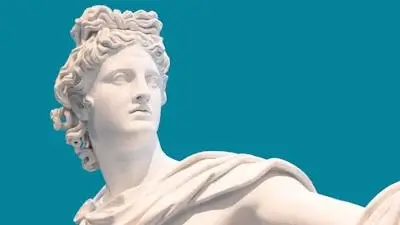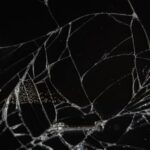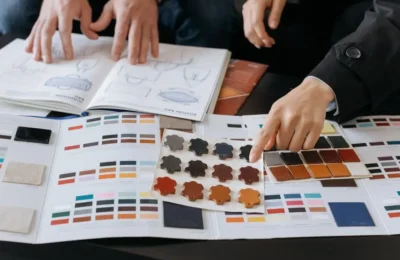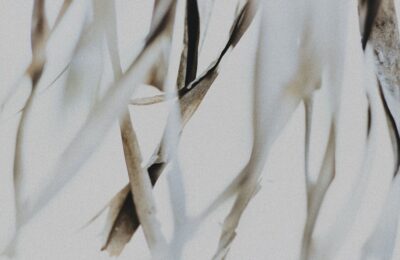Sculpture Art in Fine Arts written by Laiba Imarn
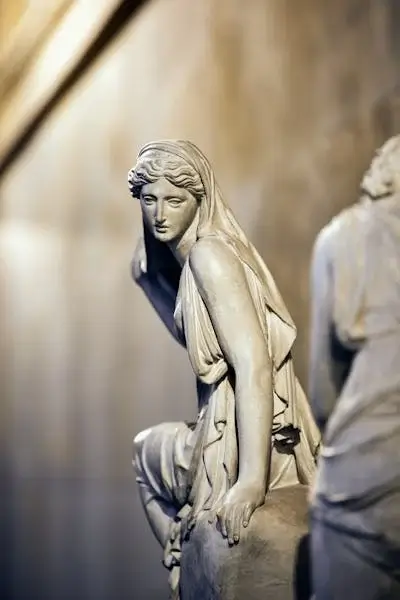
- In the world of Fine Arts;
“Sculpture has long stood as one of the most captivating and interesting art forms.”
- As a three-dimensional art form, sculpture blends:
- Material
- Space
- Volume
- It brings artistic visions to life, making it one of the most expressive mediums in both traditional and contemporary art.
- In this blog, we’ll explore the:
- Importance of Sculpture ArtsIts evolving techniques
- Its place in different art movements:
- Carved from marble
- Designed using 3D printing technology
- Sculpture continues to offer an unparalleled form of artistic expression.
The Role of Sculpture Art in Fine Arts

- Sculpture art holds a unique place in Fine Arts,
“It prioritizes artistic expression over functionality.”
- Unlike decorative objects, sculpture serves a deeper purpose.
- Allows artists to explore:
- Beauty
- Emotion
- Cultural identity through form and structure.
Important roles of sculpture Art
Aesthetic Representation
- Sculpture allows artists to explore themes of like:
- Beauty
- Proportion
- Form
- Themes like these push the boundaries of artistic representation.
Symbolism & Cultural Identity
- Sculptures often reflect upon and offer insight into:
- Cultural
- Religious
- Historical ideals
- It offers insight into society’s values.
Emotional & Conceptual Expression
- Sculpture’s main focus of interest is on the:
- Abstract emotions
- Ideas that can be translated into physical representations
Innovation & Experimentation
- Artists experiment with different materials and methods;
“Advancing the field of three-dimensional art.”
Major Techniques in Sculpture Art
- The sculpture techniques have evolved throughout the periods
- From traditional methods like carving and casting to the cutting-edge technologies of today.
Traditional Techniques
Carving:
- A subtractive method.
- Often using stone or wood.
- The artist removes material to create the desired form.
Modeling:
- An additive process using materials like clay or wax to build up:
- Shapes
- Textures
Casting:
- Creating molds for materials such as:
- Metal
- Resin
- Plaster
- Allowing for detailed and complex sculptures.
Assemblage:
- Constructing sculptures by combining mixed materials.
- This is a method, often seen in contemporary art.
Modern & Contemporary Techniques
Kinetic Sculpture:
- Sculptures that use movement, such as the works of Alexander Calder.
Installation Art:
- Large-scale immersive sculptures that engage with the viewer’s environment are known as installation art.
Digital and 3D Printing:
- Modern sculptures are designed with 3D software and produced using advanced technologies.
Eco-Sculpture:
- Sculptures are formed by using sustainable, biodegradable materials that are mindful of environmental impact.
Sculpture in Different Fine Art Movements
Throughout history sculpture art has reflected the aesthetic and cultural shifts of different periods, which were evolving alongside major Fine Art movements.
Classical & Renaissance (Idealized Forms)
Greek & Roman Sculpture:
- Characterized by perfect human proportions.
- This is exemplified by iconic pieces like the:
- Venus de Milo
- Discobolus
Renaissance Sculpture:
- Renaissance sculpture’s main focus of interest was on realism and anatomy, Michelangelo’s David is an outstanding masterpiece.
Baroque & Neoclassical (Dramatic & Historical Themes)
Baroque Sculpture:
- Baroque sculptures are usually:
- Dramatic
- Expressive
- This can be seen in work Bernini’s The Ecstasy of Saint Teresa.
Neoclassical Sculpture:
- A revival of classical forms, exemplified by Canova’s Perseus.
Modernism & Contemporary Sculpture Art (Abstract & Conceptual)
Impressionist & Expressionist Sculpture:
- Artists like Rodin explored emotional textures and expressive forms.
Abstract & Minimalist Sculpture:
- Simplicity and geometric forms define this period, with works like Brâncuși’s Bird in Space.
Contemporary Sculpture:
- Today’s sculptures often incorporate mixed media and digital technology.
Impact of Sculpture Art in Fine Arts Education
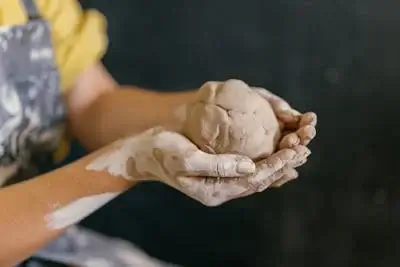
- As a core component of Fine Arts education;
“Sculpture provides a holistic foundation for aspiring artists.”
- Helping them to develop technical and creative skills.
Important points learned through sculpture Art
Technical Mastery:
- From carving to casting, artists refine their craftsmanship and techniques.
Spatial Awareness:
- Sculptors gain an understanding of volume, weight, and proportion.
Creative Exploration:
- Experimentation with different mediums allows for innovative expressions of artistic vision.
- Cultural & Historical Awareness:
- By studying historical movements and trends;
“Artists learn how to integrate tradition with contemporary practices.”
Notable Sculpture Art
Throughout the history of art, there are many renowned sculptors have left an indelible mark on the world of Fine Arts, shaping its evolution:
Michelangelo:
- Who was known for the Renaissance art movement he made masterpieces such as David and Pietà.
Auguste Rodin:
- A pioneer of modern emotional realism, creator of The Thinker.
Henry Moore:
- A Famous for abstract, organic forms in bronze and stone.
Louise Bourgeois:
- A surrealist sculptor known for large, symbolic works like Maman.
Jeff Koon:
- A contemporary artist recognized for his Pop Art-inspired sculptures like Balloon Dog.
Sculpture Art: Conclusion
- Sculpture, as one of the oldest forms of art in Fine Arts, continues to evolve by the use of new materials, technologies, and concepts.
- First were the marble statues of ancient Greece, now to conceptual sculptures of today.
- This dynamic art form remains a powerful medium for artists to communicate their vision.
- Sculpture continues to shape the world of art, pushing the boundaries of creativity and innovation.
Are you Interested in exploring more about the evolution of Fine Arts and sculpture?
Stay connected with raiseyourdimensions.com for more in-depth insights and the latest trends in the art world.


